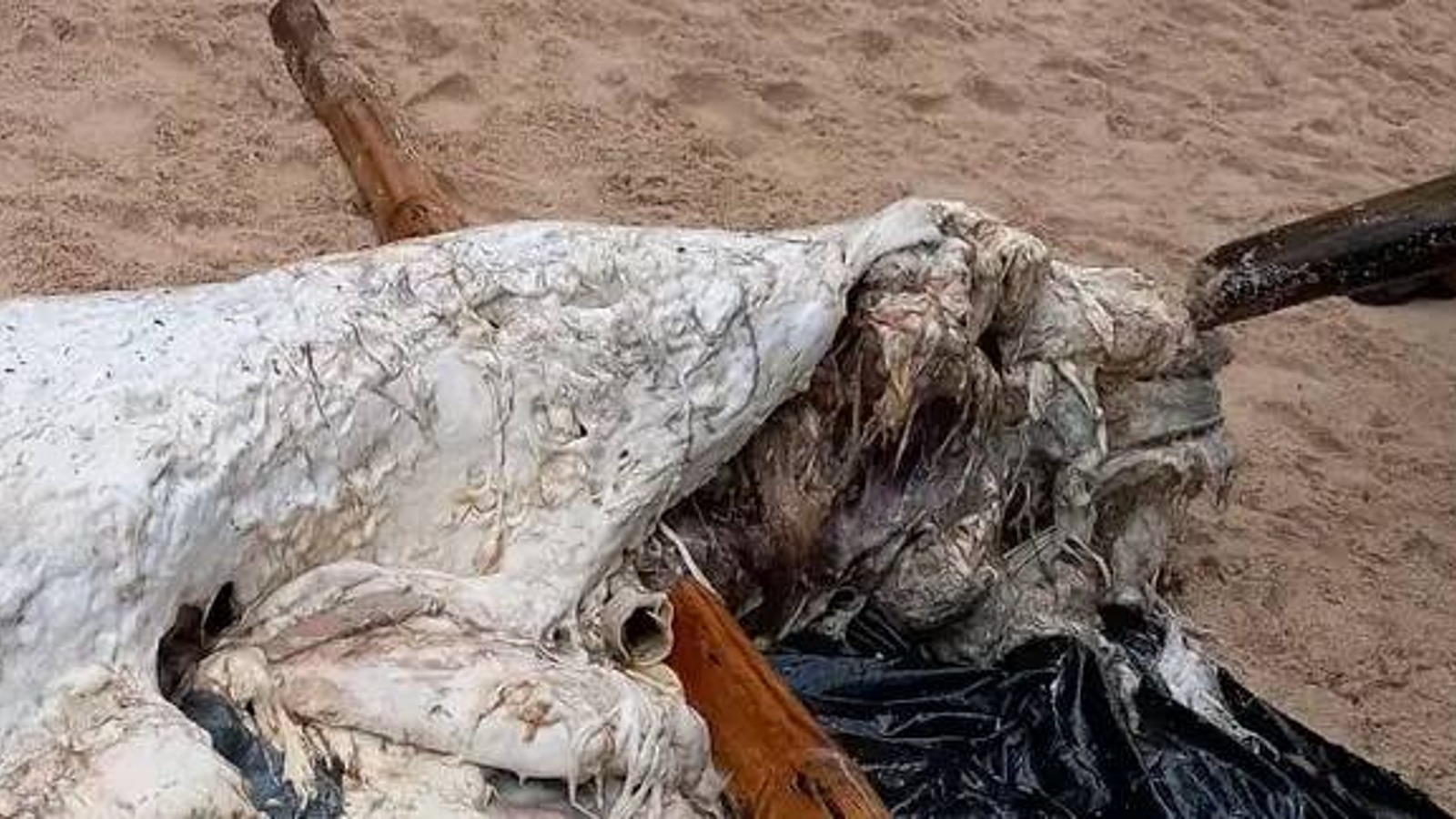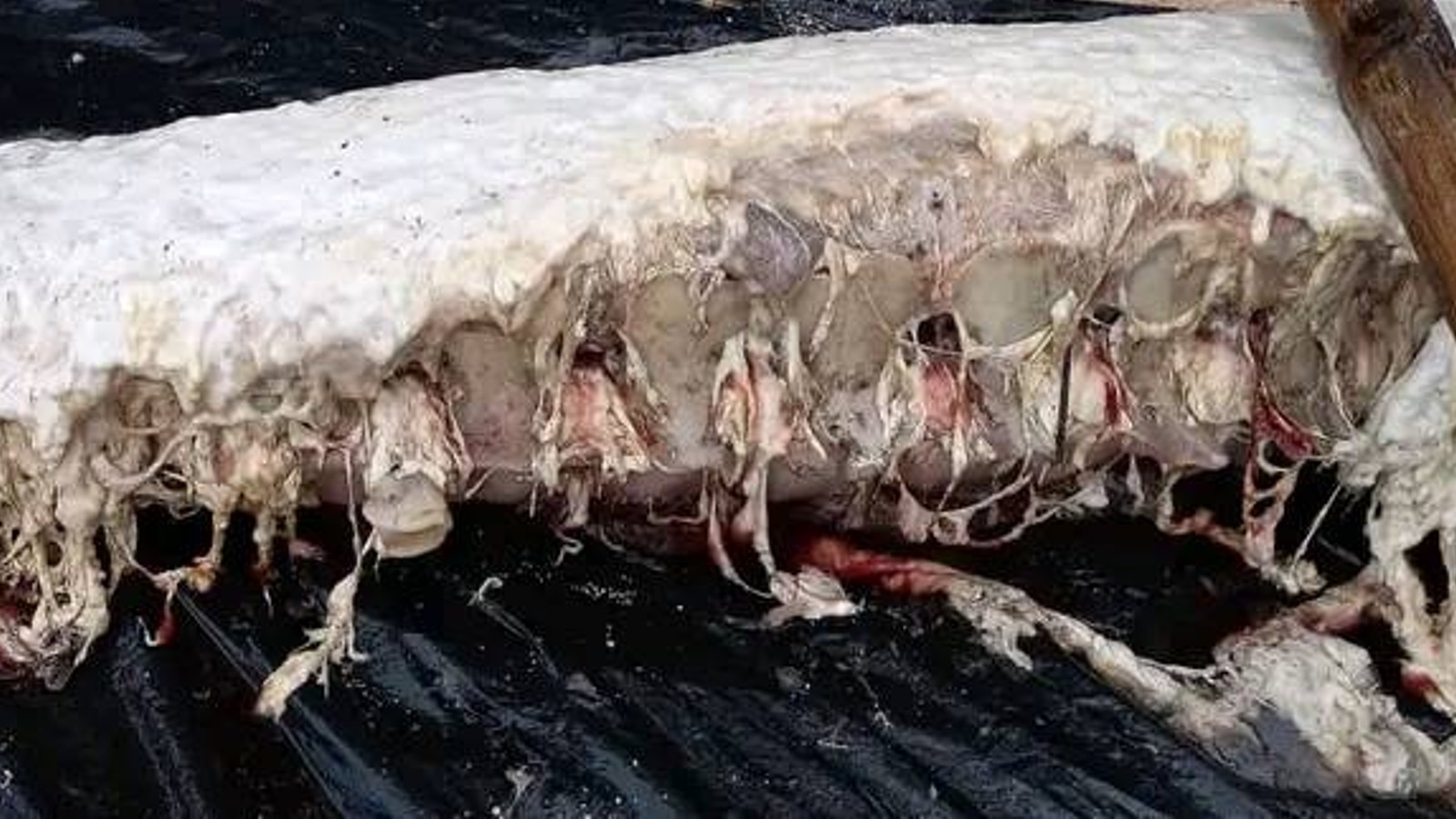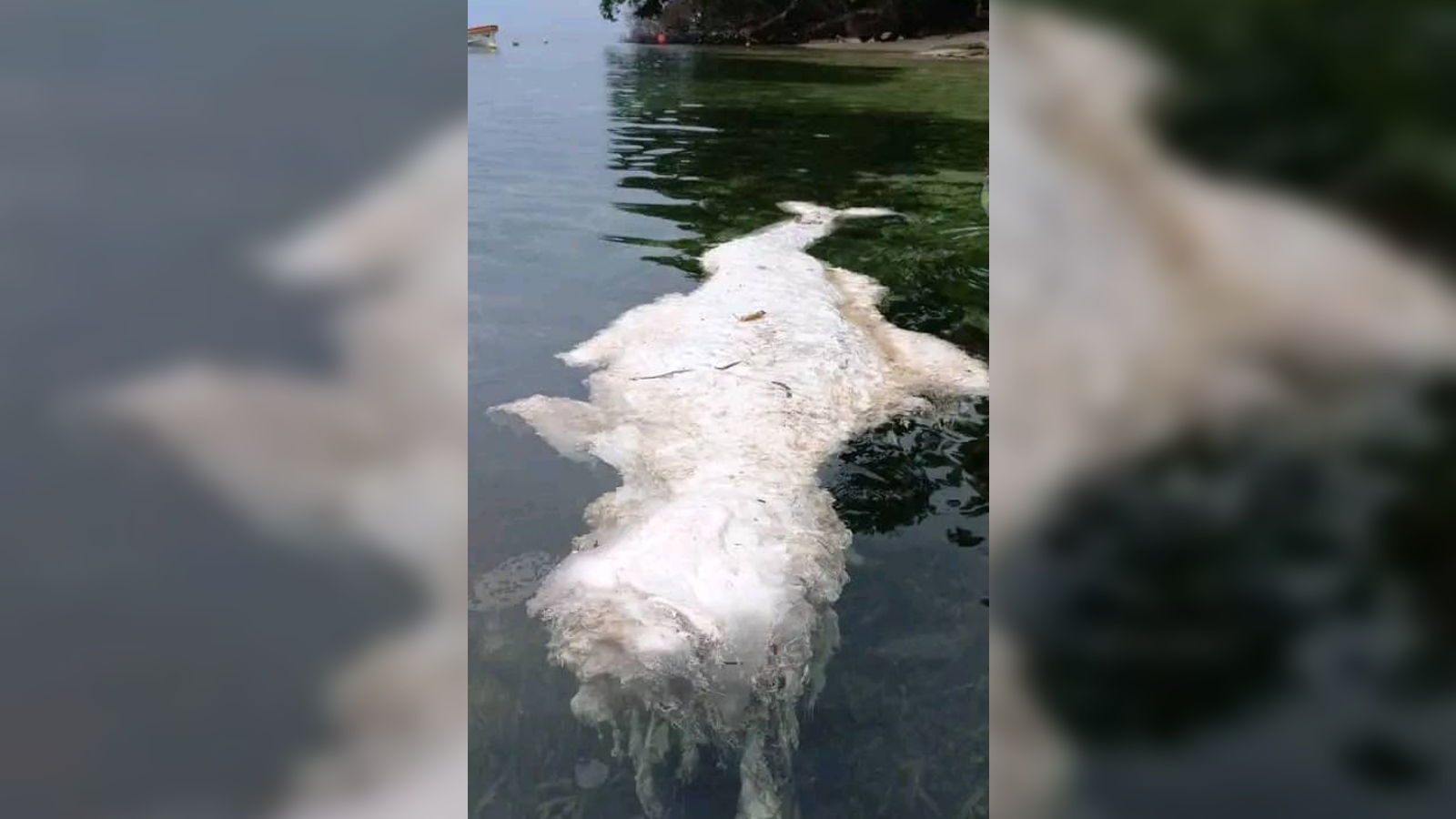Identity of mysterious 'mermaid globster' that washed up in Papua New Guinea 'is anyone's guess,' experts say
The severely decayed remains of a marine creature recently washed up on a beach in Papua New Guinea. Experts can't agree on what the ghostly white lump is, but it is most likely the remains of a marine mammal.
A ghostly white lump of rotten flesh in the shape of a mermaid recently washed ashore on an island in Papua New Guinea — and experts baffled.
The strange sea creature was likely a marine mammal, but its exact origins are unclear, experts told Live Science.
The mysterious mass was discovered Sept. 20 by locals on Simberi Island — a small volcanic island with a population of around 1,000 people in the Bismarck Sea in New Ireland Province, according to a Facebook post by New Irelanders Only (NIO).
It is known as a globster — an unidentified organic mass that washes ashore. The origin of these mystery lumps is hard to pin down because much of the corpse has rotted away and most are missing body parts that have fallen off at sea. In this case, most of the creature's head and large chunks of its flesh are missing.
There is no information on the size and weight of the corpse because it was not properly measured before locals buried it, NIO representatives told Live Science. And no one collected DNA samples, which makes a proper identification almost impossible.
Related: 10 bizarre creatures that washed ashore in 2022
Experts were also unable to identify it from the images alone.
Get the world’s most fascinating discoveries delivered straight to your inbox.
Helene Marsh, an environmental scientist at James Cook University in Australia, told Live Science it looks like a marine mammal. "After that it is anyone's guess," she added.
Sascha Hooker, a marine mammal expert at the University of St Andrews in Scotland, narrowed it down further. "It looks like a very decomposed cetacean to me," she told Live Science. Cetaceans, or whales and dolphins, are known to turn this color when their skin falls off, she added.
The most common cetaceans in the area are short-finned pilot whales (Globicephala macrorhynchus), spinner dolphins (Stenella longirostris), pantropical spotted dolphins (Stenella attenuata) and sperm whales (Physeter macrocephalus), according to a 2021 study in the journal Pacific Science.
Erich Hoyt, a researcher at Whale and Dolphin Conservation in the U.K. and author of several books on cetaceans, agrees that the globster could be a small whale. However, he believes that it could also be a dugong, or "sea cow," that is known to graze on sea grasses in shallow waters in Papua New Guinea.
Other experts also suggested it could be one of the pudgy marine mammals, which have previously inspired stories of mermaids. "My best estimate is that it might be a Dugong," said Jens Currie, chief scientist of the Pacific Whale Foundation in Hawaii. Based on what's left of the head, it looks too wide to be a cetacean, he added. And "the amount of blubber also indicates a marine mammal and not a shark," Currie said.
But not everyone thinks that the globster was a marine mammal.
Gavin Naylor, a marine biologist at the University of Florida who runs the International Shark Attack Files, thinks the remains could be from a large shark. Although "it is a little weird that all of the skin appears to have rotted off," he told Live Science.


Other shark experts disagree.
"At first, I was leaning toward a large shark, but now that I've spent a bunch of time looking at this, I am more confident it is a cetacean" due shape of the tail and location of the flippers, said Gregory Skomal, a marine biologist at the University of Boston and head of the shark program at Massachusetts Marine Fisheries. The vertebrae, which are exposed in one of the images, also look more like a whale's backbone than a shark's cartilaginous spine, he told Live Science.
Skomal also spotted what "looks like a trachea," or windpipe, hanging from the animal near where its head was. If true, this would rule out a shark.
But whatever it is, it has likely "been dead for weeks," Hoyt said.

Harry is a U.K.-based senior staff writer at Live Science. He studied marine biology at the University of Exeter before training to become a journalist. He covers a wide range of topics including space exploration, planetary science, space weather, climate change, animal behavior and paleontology. His recent work on the solar maximum won "best space submission" at the 2024 Aerospace Media Awards and was shortlisted in the "top scoop" category at the NCTJ Awards for Excellence in 2023. He also writes Live Science's weekly Earth from space series.





